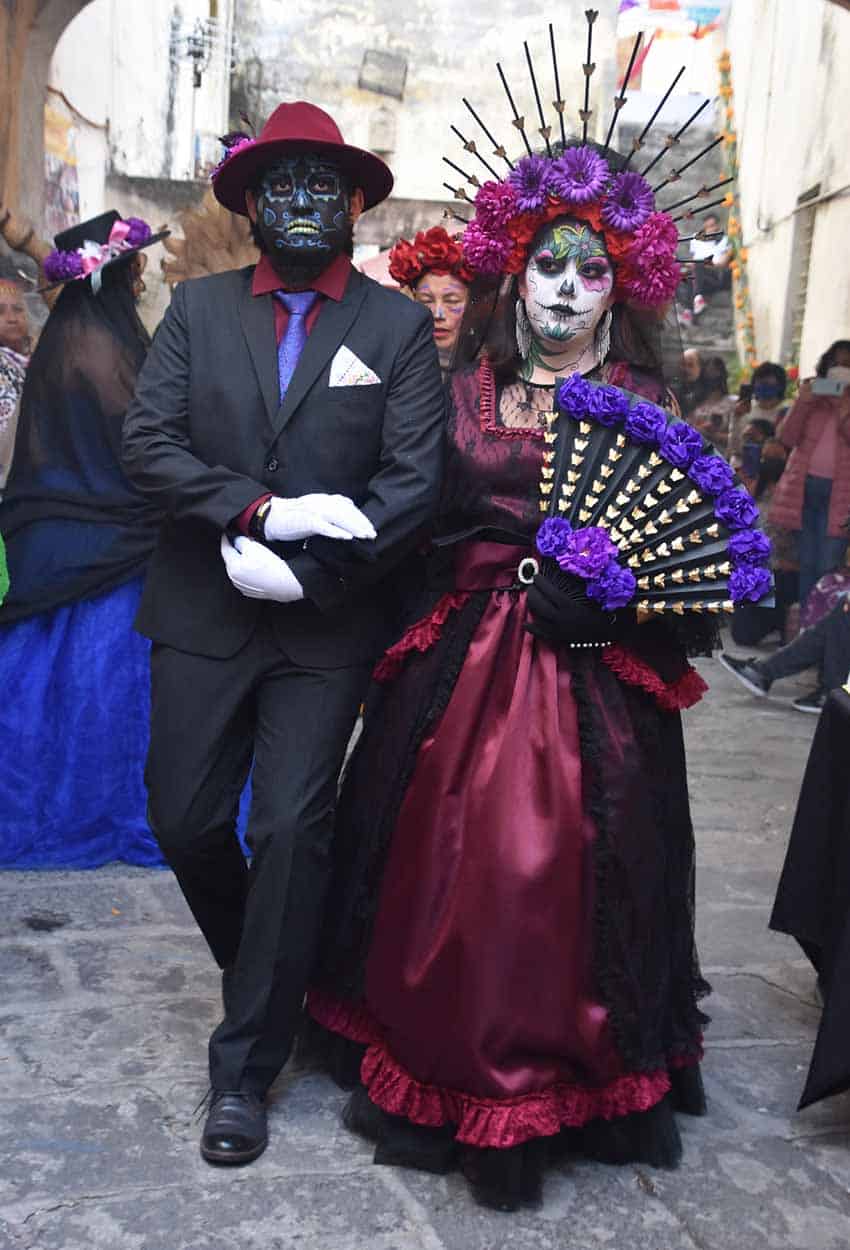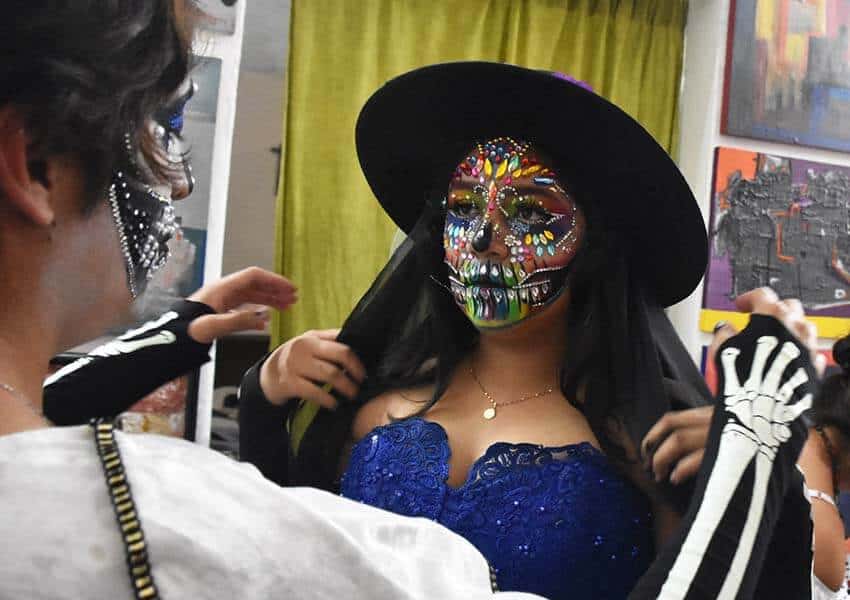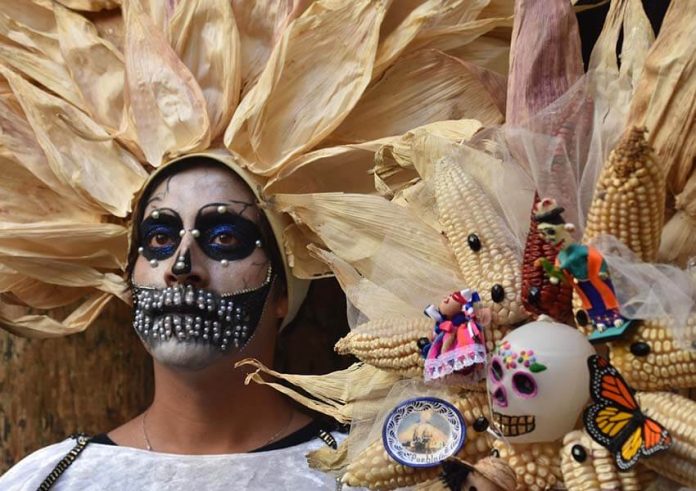Day of the Dead — celebrated in modern times on November 1 and 2 — is based on ancient indigenous ceremonies that, at least in the Mexica or Aztec civilization, may have lasted for as long as two months.
This year, some residents of Puebla city decided that they wanted to put on a Catrina parade that would acknowledge the holiday’s beginnings in those ceremonies.
In one of the Mexicas’ two calendars, a religious calendar called the xiuhpohualli, Miccailhuitontli was the Mexica period of “the little feast of the dead,” which was a preparation for Huey Miccaílhuitl, “the great feast of the dead.”
The celebration of Miccailhuitontli has mostly been lost in Mexico, but a group in the city of Puebla decided to bring it back.
“In pre-Hispanic cultures, Day of the Dead began in what we would consider the month of September,” Esther Cortés Rojas, the co-coordinator of the Puebla event, said.
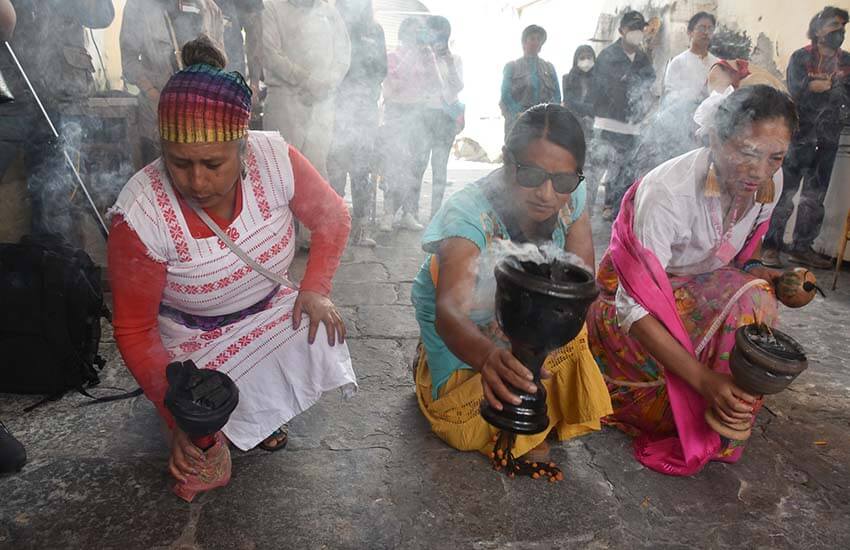
She and José Velázquez Guevara, the other coordinator, decided to celebrate Miccailhuitontli with workshops and a Catrina parade at the Taller Estudio de la Cura, an art school in the city.
“This is the first time we presented it,” Velázquez said. “This marks for us the beginning of Day of the Dead. We want people to understand this.”
The day began with a Mexica ritual.
“We ask for permission to have this ceremony. We perform a ritual to the four points,” Víctor Carreto Cabaños, the ritual’s leader, said.
The four points refer to both the four cardinal directions as well as the four elements that were important to the Mexica: earth, wind, fire and water.
To open the ceremony, Carreto chanted and hit a small drum while three assistants purified the space with incense. He explained that the ritual isn’t to ask permission from a god.
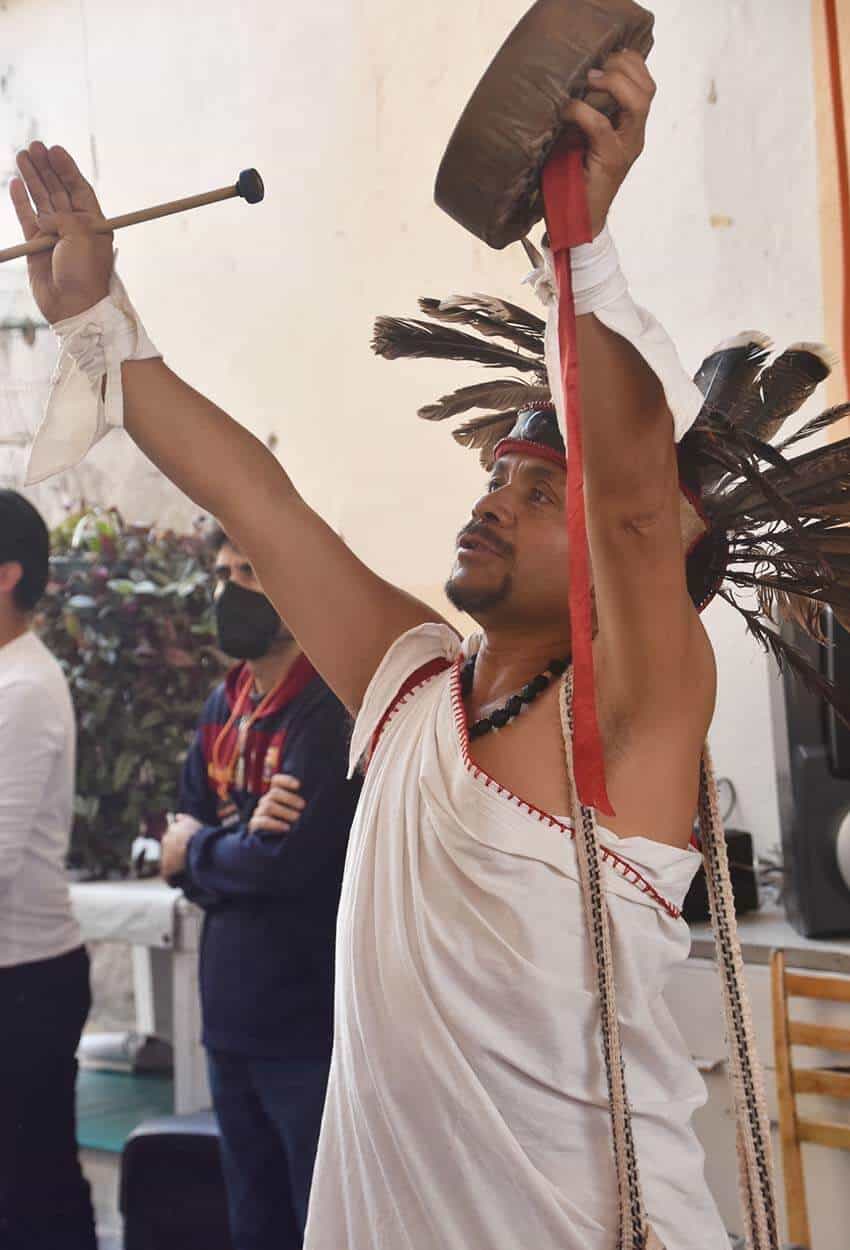
“In [the indigenous language of] Náhuatl, there is no word for god,” he said. “We believe in energy, the energy that is the universe.”
Organizers held workshops where attendees learned about the cempasúchil (Mexican marigold — the iconic Day of the Dead flower) and the role of cacao in indigenous cultures. They also got to make skulls out of amaranth.
But the highlight of the day was the Catrina parade.
Catrina is the iconic Day of the Dead figure, based on a 1910 etching by José Guadalupe Posada, popularized by a later work of Diego Rivera.
The figure, as intended by Posada, pokes fun at Mexicans who imitated European styles during the era of President Porfirio Díaz, known as the Porfiriato. The Catrina also pokes fun at death.
It takes time and patience to transform a person into a Catrina.
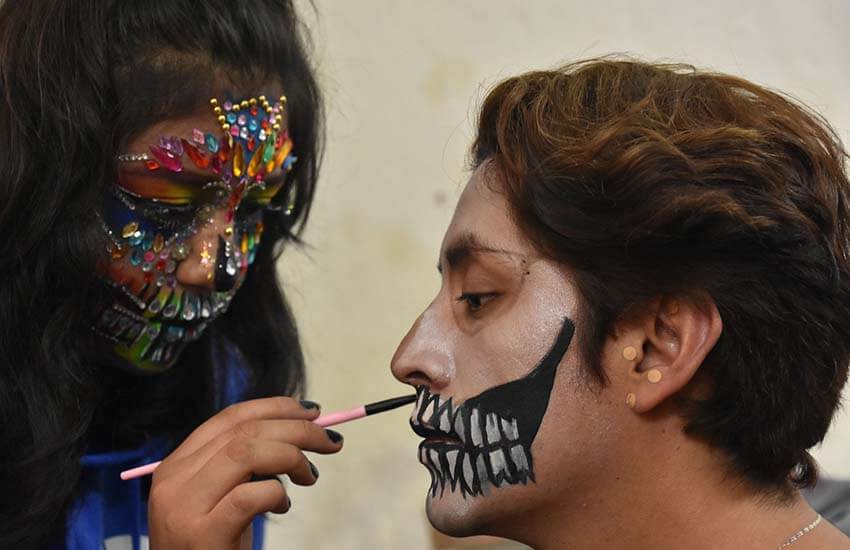
In a small room, Blanca Anahí Llamas Torres painstakingly applied makeup to Luis Eduardo Cuanal’s face.
“We are projecting death using art, music and theater,” Cuanal said. “It is to represent the cult of death. Catrina signifies an expression of death in a feminine figure.” Cuanal’s transition into a Catrina took almost an hour.
Nearby, Alexandra Cazorla and Alexis López, whose faces were painted as skulls, waited for the parade to begin.
“This is a preamble to Day of the Dead,” Cazorla said. “It is to show death as something profound, a transcendence, [to show] that we do not completely end.”
“It is not to show fear,” added López. “It is to have a fiesta.”
Before walking around the patio, each participant was cleansed with incense before Cortés led them down a path made from cempasúchil petals. Finally, they all posed on the studio’s staircase.
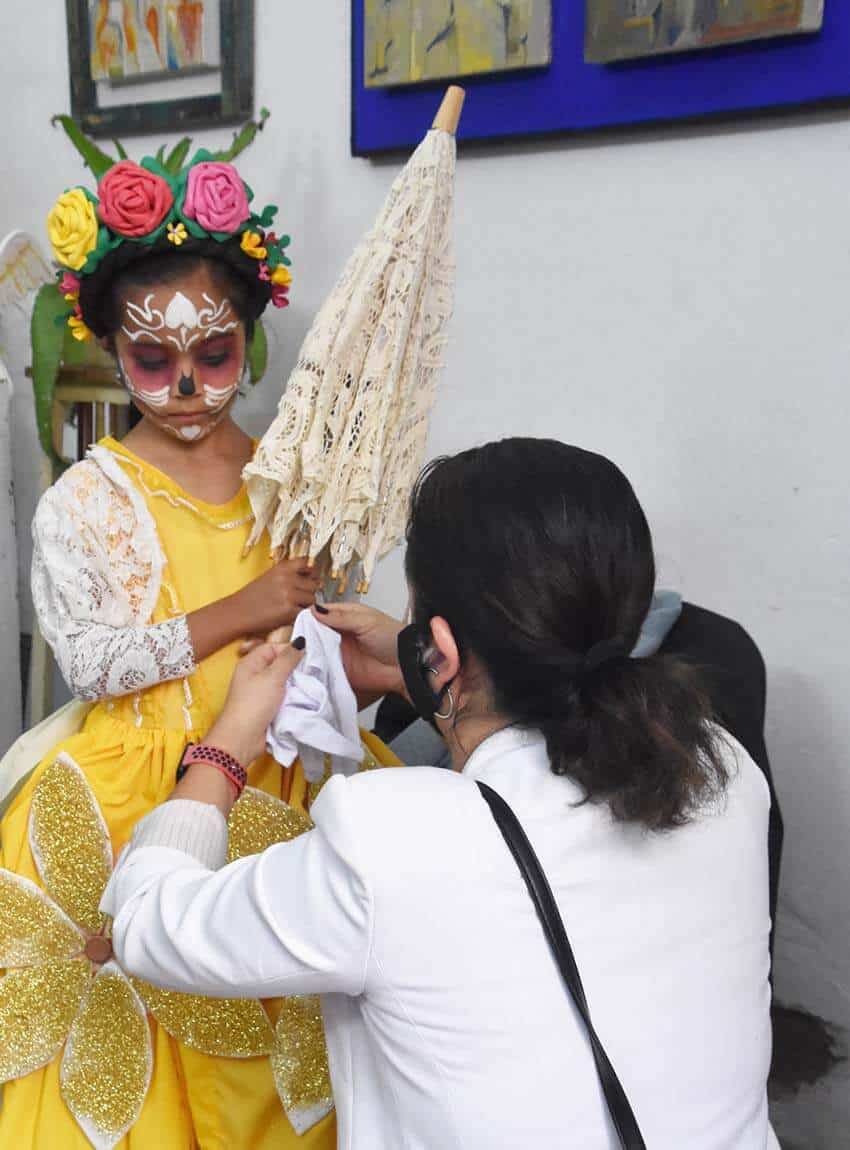
“Day of the Dead is to remember people who have died,” said Elizabeth Damián Espinosa, who organized the parade. “It is also to say, ‘I am going to die someday, too.’”
Joseph Sorrentino, a writer, photographer and author of the book San Gregorio Atlapulco: Cosmvisiones and of Stinky Island Tales: Some Stories from an Italian-American Childhood, is a regular contributor to Mexico News Daily. More examples of his photographs and links to other articles may be found at www.sorrentinophotography.com He currently lives in Chipilo, Puebla.
